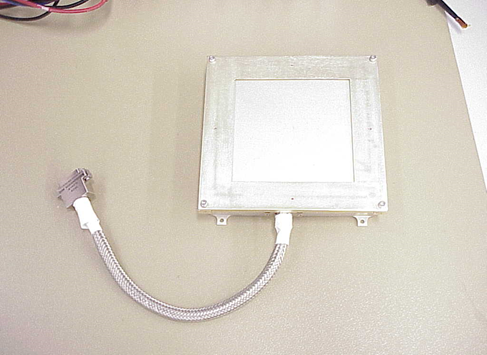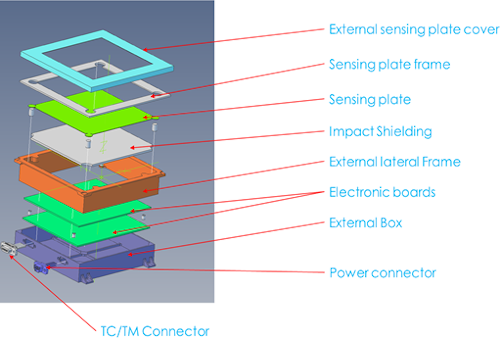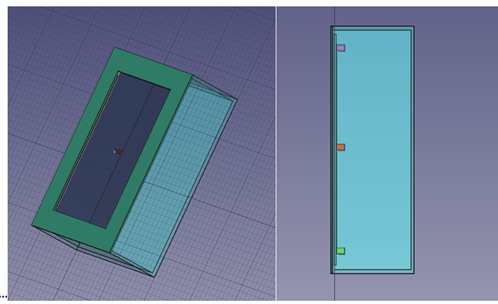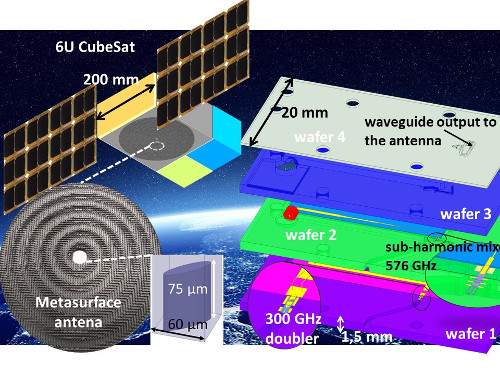Introduction
Historically, deep-space missions have been characterized by large and massive probes. The high cost needed to reach escape trajectories, hazardous environment of deep-space, and usually long cruise phase to the final target, drove this kind of missions to rely upon a unique, large long-life probe.
On the other side, CubeSats were born to be a cheap alternative for relatively short low Earth-orbiting missions. As CubeSats has been extensively tested on-field, they proved to be capable to achieve many of the tasks of a classical space mission, even though with lower performances depending on off-the-shelf payloads. The idea of coupling one or more CubeSats to support a classical deep space probe could be useful to reduce the mission costs while increasing the scientific objectives. For instance, CubeSats could be used to split mission tasks, to perform gravity investigations using formation flight (Hera-Juventas [1]), or dedicated optical observation (LICIACube [2], Argomoon [3]). The costs could be additionally reduced by releasing the CubeSats only when necessary, i.e. once reached the investigation situ. However, CubeSats’ payload and onboard computation limits, miniaturized thrusters and smaller non-directional antennas set a tricky challenge to the Orbit Determination (OD) and Navigation (NAV) tasks.
Recently, the Mars Cube One (MarCO) mission has demonstrated the capabilities of the CubeSats in deep-space environment [4]. It consisted of two 6U CubeSats whose primary objective was to act as communication relay between the Earth and the InSight Mars lander during its Entry, Descent, and Landing (EDL) phase. During the mission, some critical points were highlighted, such as the thruster’s reliability. In the following, we will present the challenges in the navigation of the deep-space CubeSat LICIACube.
LICIACube
The Light Italian CubeSat for Imaging of Asteroid (LICIACube) is a 6U CubeSat of the Italian Space Agency (ASI) that will operate in conjunction with the NASA “Double Asteroid Redirection Test” (DART) aimed at the Didymos binary asteroid system [5]. The main goal of LICIACube is to support the asteroid deflection assessment by imaging the effects – in particular the ejecta plume - of the DART impact on the moon of Didymos, dubbed Dimorphos, as well as the non-impacted hemisphere of the Dimorphos itself. LICIACube design, manufacturing and testing will be implemented by the Italian company Argotec, that will also operate the spacecraft from the Argotec’s Mission Control Centre (MCC). The LICIACube scientific team is contributing to identify the driving constraints to Mission Design (MD) and OD. Moreover, the coordination with Johns Hopkins University Applied Physics Laboratory (JHU-APL) is focused on optimization of the trajectory and of the mission resources, such as the Deep Space Network (DSN) coverage, as well as pointing requirements to avoid mutual interference.
The LICIACube probe will be released by DART piggyback dispenser 10 days before the scheduled impact (end of 2022) and will independently approach the Didymos system. Approximately 3 minutes after DART impact on Dimorphos, LICIACube will perform its flyby of the binary asteroid, leaving the system in a heliocentric trajectory for the following 2-6 months, necessary to download the acquired data. The OD of LICIACube is based only on radiometric observables, Doppler and ranging, since the optical observables download time exceeds the useful OD time before the secondary flyby. Based on the baseline trajectory provided by MD, the OD-NAV will be responsible for real-time trajectory reconstruction and probe guidance to achieve the desired flyby conditions, set to maximize the scientific return. Based on the platform limits and the available ground resources, numerical simulations demonstrated that two 1.5h tracking passes per day allow to satisfy the requirements in terms of OD accuracy.
Orbit Determination Challenges
The OD process used to estimate the trajectory of a deep-space spacecraft is mainly based on radiometric and astrometric observables. The radiometric observables, mainly ranging and Doppler, are acquired by a ground stations network (e.g. DSN) to ensure continuous coverage, while the astrometric ones are acquired on-board through navigation cameras or dedicated payloads.
Due to the low data rate available and the performances of the cameras, LICIACube OD-NAV tasks for the Didymos approach phase will rely on radiometric observables. Nonetheless, any optical observable will be used for the a-posteriori orbit reconstruction.
A great source of uncertainty is also due to the thrusters. Due to the lack of a detailed characterization of the thrusters it is quite difficult to provide realistic values for the related accuracy. Moreover, the LICIACube mission will perform only up to 3 different orbital maneuvers, preventing the capability of any calibration during the mission, usually possible if a large set of maneuvers has been planned.
Acknowledgments: This research was supported by the Italian Space Agency (ASI) within the LICIAcube project (ASI-INAF agreement AC n. 2019-31-HH.0).
References: [1] P.Tortora et al. “Didymos Gravity Science through Groundbased and Satellite-to-Satellite Doppler Tracking”, EGU General Assembly 2020.
[2] E.Dotto et al. “LICIACube - the Light Italian Cubesat for Imaging of Asteroids: in support of the NASA DART mission towards asteroid (65803) Didymos”, Plan. Space Sci., 2020, submitted.
[3] V. Di Tana et al., “ArgoMoon: There is a Nano-Eyewitness on the SLS”, IEEE Aerospace and Electronic Systems Magazine, vol. 34, no. 4, pp. 30-36, 1 April 2019, doi: 10.1109/MAES.2019.2911138.
[4] T. J. Martin-Mur and B. Young, “Navigating MarCO, the First Interplanetary CubeSats”, Jet Propulsion Laboratory, California Institute of Technology, Pasadena, CA 91109, USA
[5] A.F.Cheng at al. “AIDA DART asteroid deflection test: Planetary defense and science objectives”, Plan. Space Sci., Vol. 157, pp. 104-115, 2018.





